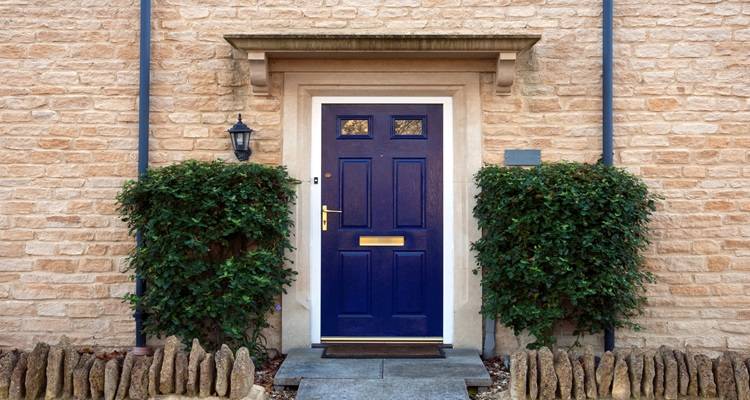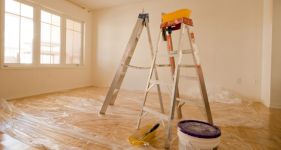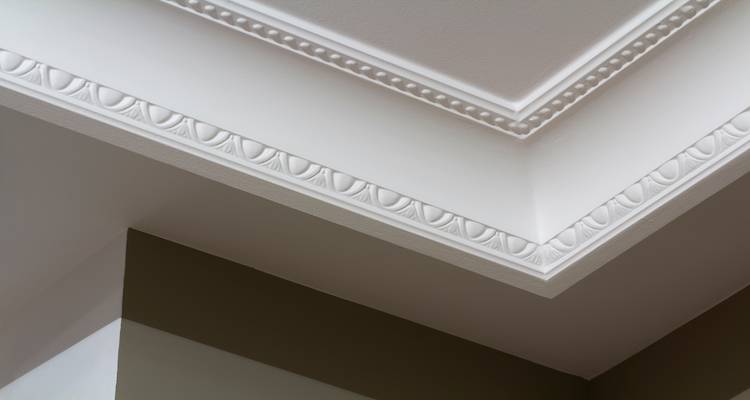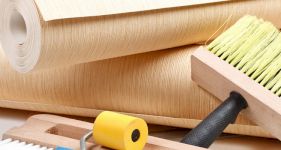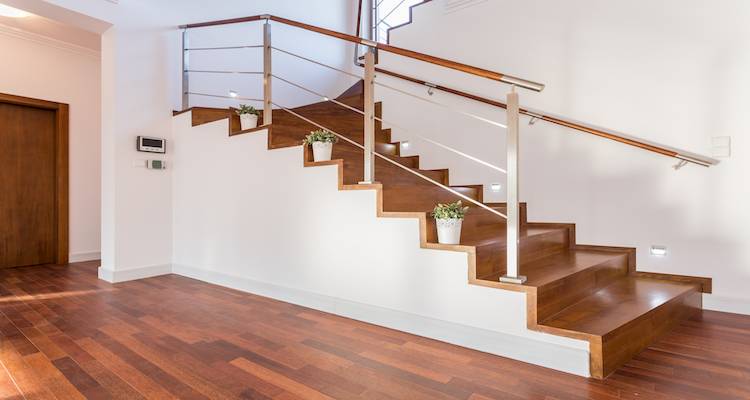How to Remove Wallpaper
If you wish to give your walls a fresh start, you may need to discover how to remove wallpaper efficiently. Read on to learn the different methods of removing wallpaper and what tools you need to do it.
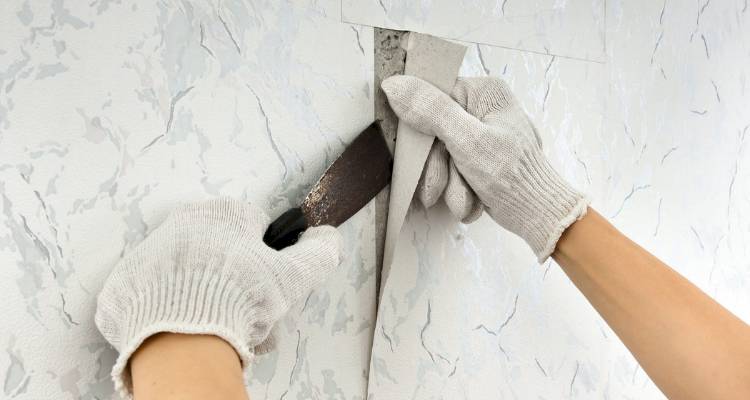
Table of Contents
- What Tools Do I Need to Remove Wallpaper?
- What Safety Equipment Do I Need to Remove Wallpaper?
- How to Remove Wallpaper Yourself
- How to Remove Wallpaper: Score, Soak, and Strip
- How to Remove Wallpaper: Chemical Stripper
- How to Remove Wallpaper: Steam Stripper
- How To Remove a Wallpaper Border
- Wallpaper Types
- FAQs
What Tools Do I Need to Remove Wallpaper?
Below is a list of tools that you will need for different types of wallpaper stripping methods when taking on the job yourself. Alternatively, you can find plenty of tradesmen able to help with removing hanging wallpaper".
Score, Soak, and Strip
Here are the tools you'll need if you're doing the score, soak and strip method:
- Stanley knife
- Sponge
- Bucket
- Stripping knife
Chemical Stripper
If you are using a chemical stripper, here are the tools you'll need:
- Roller
- Bucket
- Stripping knife
- Chemical wallpaper remover
Steam Stripper
These are the list of tools you'll need if you're using a steam stripper:
- Steam stripper machine
- Stripping knife
What Safety Equipment Do I Need to Remove Wallpaper?
Below is a list of the safety equipment that is recommended for removing wallpaper:
- Safety goggles or glasses
- Gloves
- Dust mask
How to Remove Wallpaper Yourself
There are a few different options when it comes to removing wallpaper. Please see the step-by-step guides below on the various ways in which you can remove wallpaper.
These guides apply to removing living room wallpaper and removing bedroom wallpaper, as well as removing wallpaper in any other rooms of the house.
The best way to remove wallpaper will depend on your personal preference and the area you are working on. Steam strippers tend to work best for larger rooms.
How to Remove Wallpaper: Score, Soak, and Strip
Step 1
Start by lightly scoring the plaster with your stanley knife. Be careful not to damage the underlying plaster.
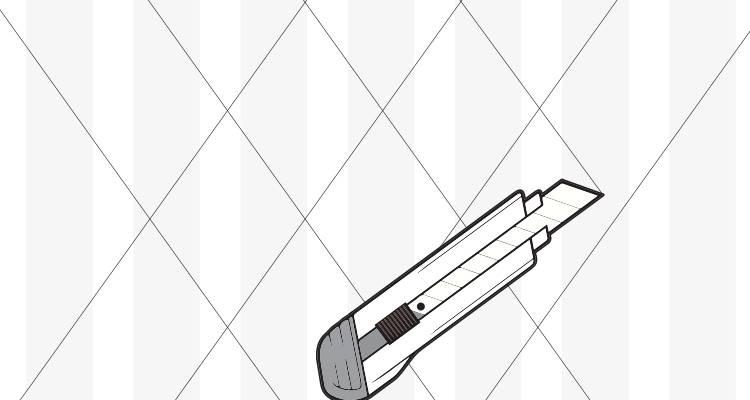
Step 2
Next, soak the paper using a sponge and some hot water.
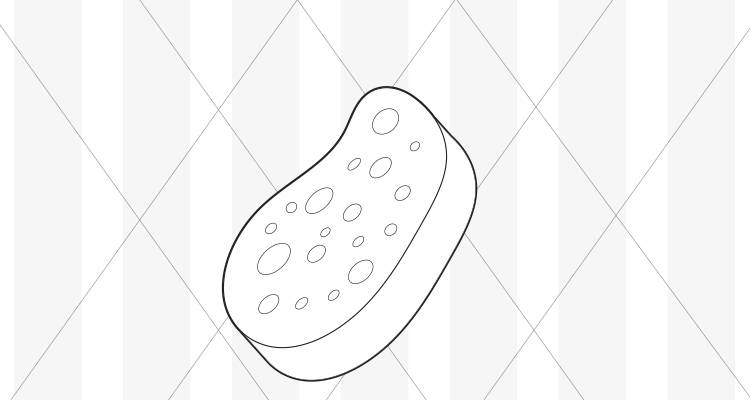
Step 3
Leave the wallpaper to soak for around five minutes, although thick or vinyl-coated wallpaper may require longer.
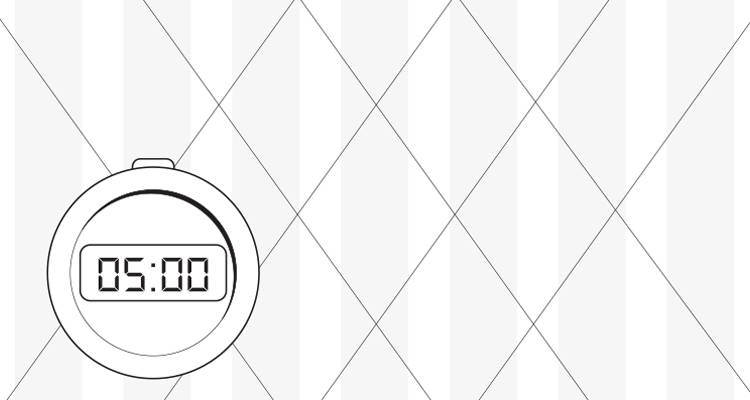
Step 4
Then, start working your stripping knife into the scores and stripping the paper away from the plaster behind.
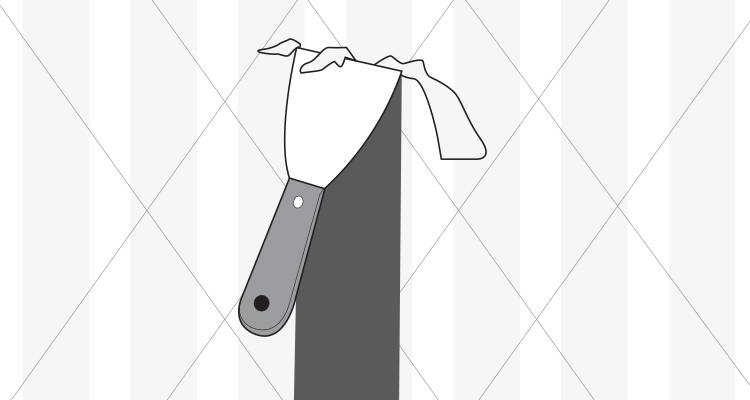
Step 5
Continue these steps across the entire length of the paper that you want to remove.
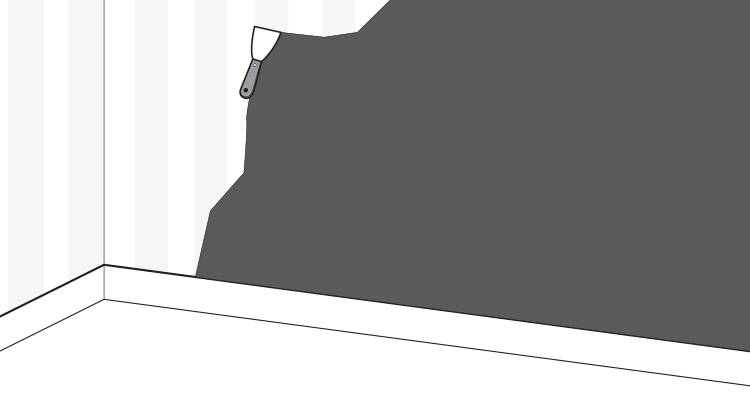
How to Remove Wallpaper: Chemical Stripper
Step 1
Check the manufacturer’s instructions and create your chemical mix.
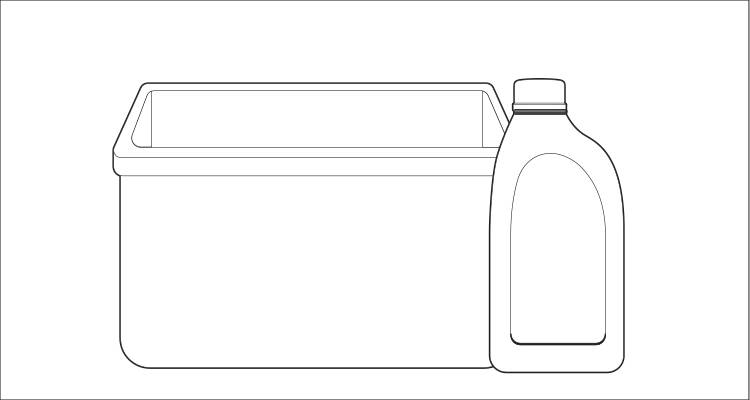
Step 2
Wear goggles, protective gloves, a face mask, and protective clothing when handling the chemical substance.
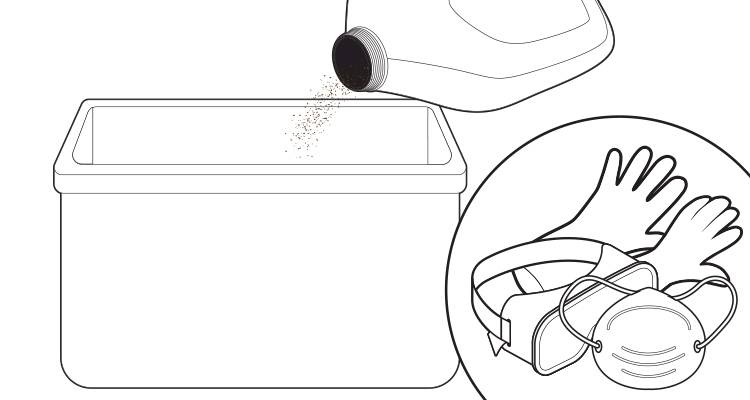
Step 3
Spread your chemical mix across the wallpaper that you wish to remove.
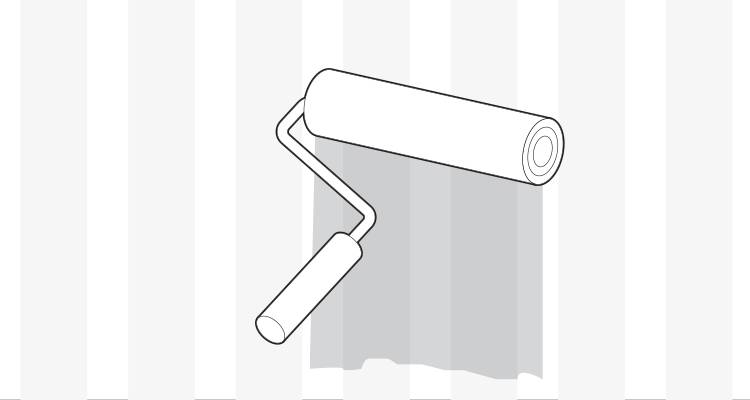
Step 4
Give your mix time to soak into the paper. Be sure to read the manufacturer’s instructions for the exact time you need to leave it.
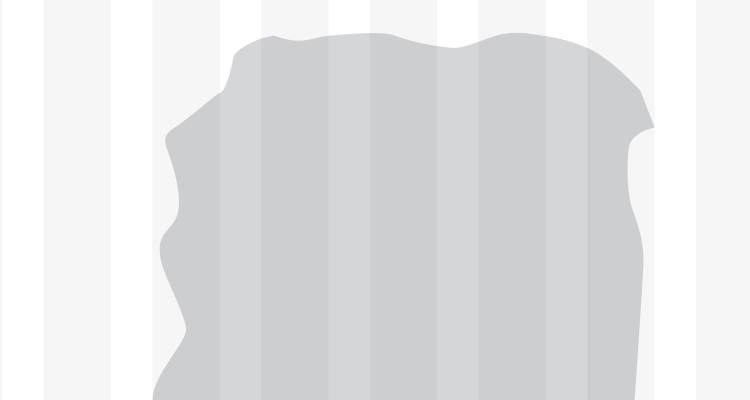
Step 5
Then, strip the wallpaper.
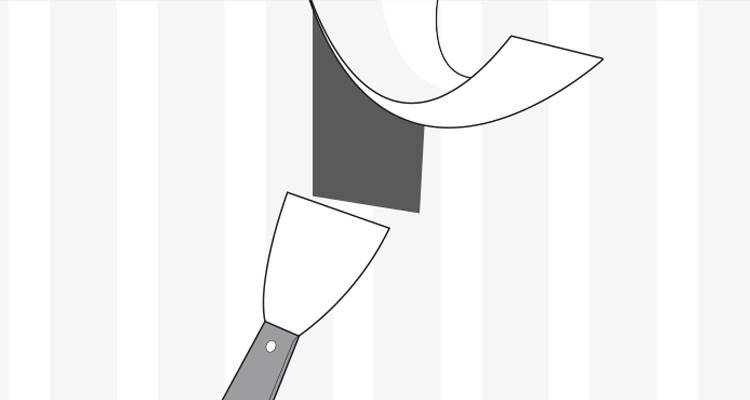
Step 6
Continue these steps across the entire length of the paper that you want to remove.
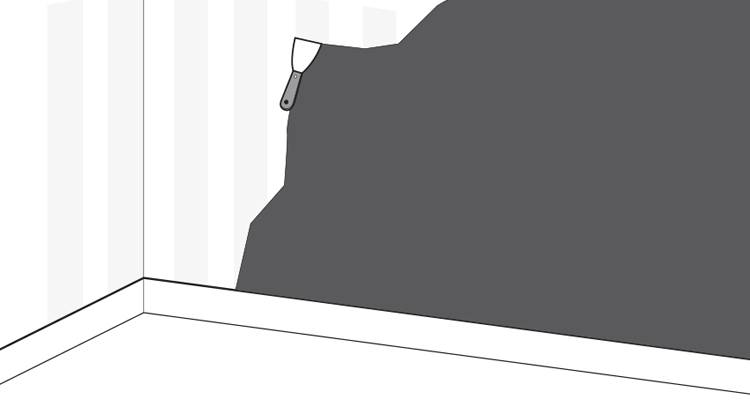
How to Remove Wallpaper: Steam Stripper
Step 1
Fill the tank of the steam stripper with water and switch it on.
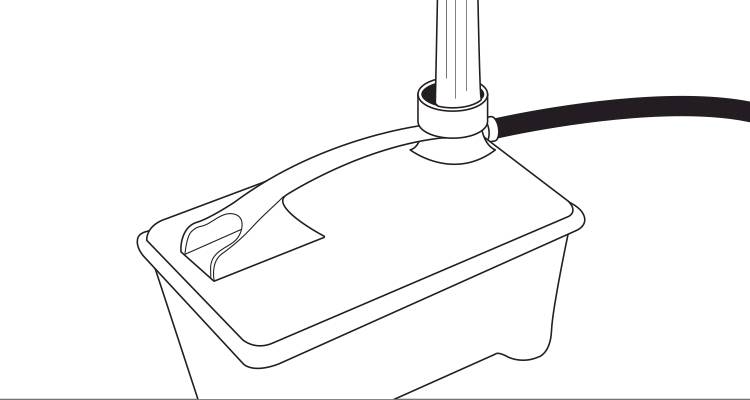
Step 2
Hold the plate against the area of the wallpaper that you are trying to strip.
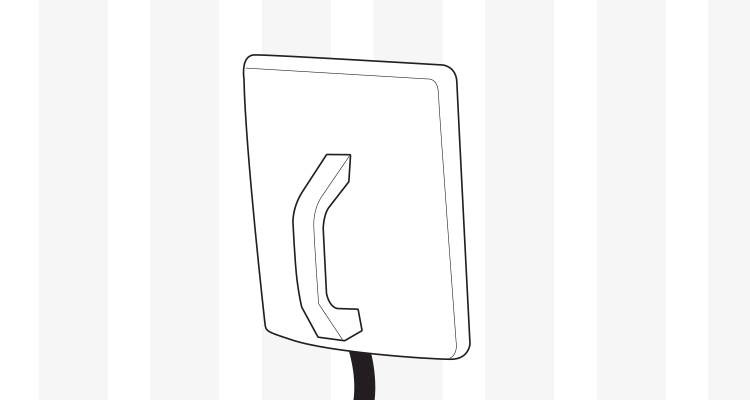
Step 3
The steam should only take around 15 seconds to start penetrating the wallpaper, although this may vary depending on the type of wallpaper, the thickness and how difficult it is to remove. Once the steam has taken affect, simply strip the paper using your stripping knife, and it should start to come off easily.
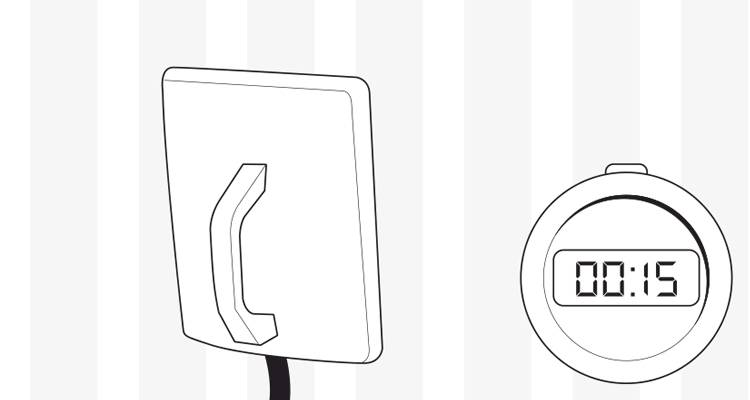
Step 4
Remember not to leave the steam plate on one area for too long as it can damage the underlying plaster.
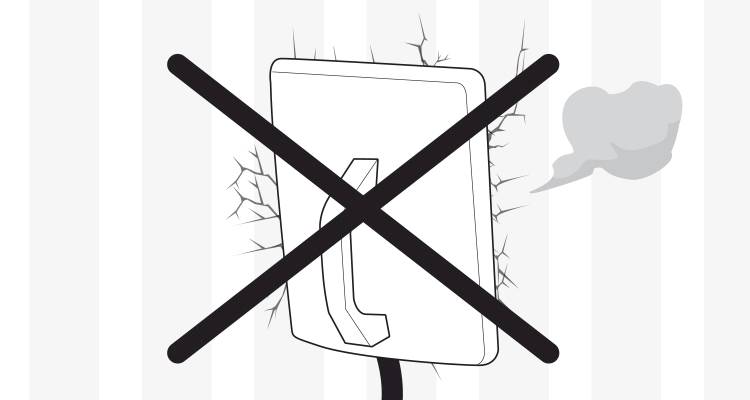
Step 5
If any areas are stubborn, re-steam them and try again.
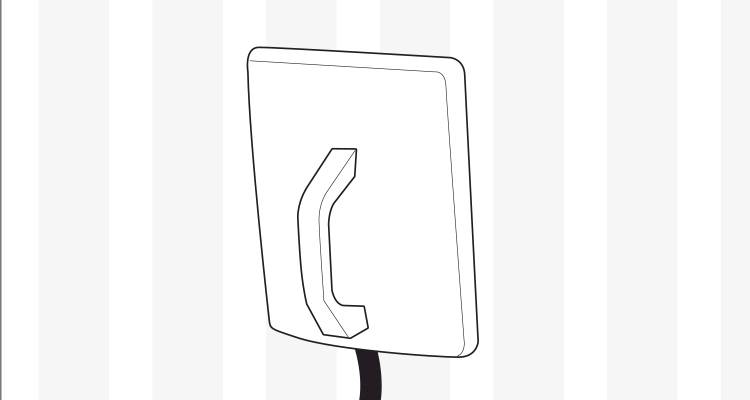
Step 6
Continue these steps across the entire length of the paper that you want to remove.
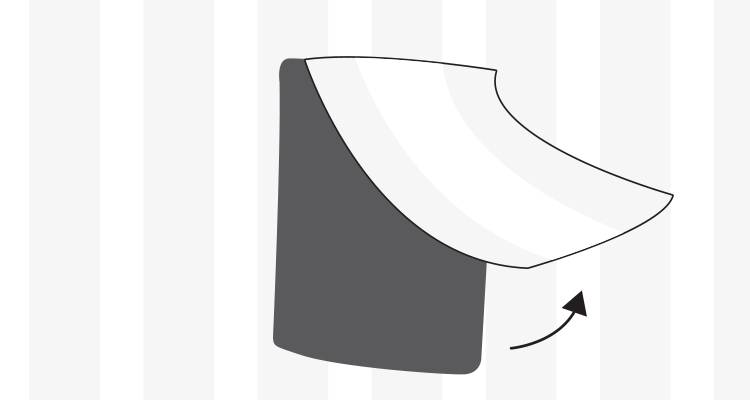
How To Remove a Wallpaper Border
A wallpaper border is a separate strip of wallpaper, designed as a way to decorate the edges or middle of a wall. It's often used to create a visual effect and as a divider between two different colours or designs.
Below is a list of steps to take to remove a wallpaper border:
- Fill a spray bottle with warm water.
- Mist the surface area of the wallpaper border.
- Let the water soak into the border and allow it some time to soften the adhesive.
- Once the adhesive has softened, peel the border away. A plaster scraper can be used to assist with removing the border if needed.
- Apply more water as and when needed to soften the adhesive so that the border can be pulled away easily.
Wallpaper Types
There are many different types of wallpaper that you can buy for your home, and each has a distinct look and additional benefits. Below is a list of the most popular types of wallpaper that you can get for your home along with the pros and cons of each type:
Linear Wallpaper
This wallpaper is made from fibreglass and is useful in hiding defects in the wall and minimising repairs. It can be used as a wallpaper base for more delicate varieties of wallpaper.
Pros
- ✔ Easy to apply
- ✔ Hides defects and minimises repairs
Cons
- ✖ Not as beautiful as other wallpaper types
Printed Wallpaper
This is a common type of wallpaper that comes in a wide variety of styles and colours.
The ink on printed wallpaper can be affected by water, so it would not be an ideal choice for bathrooms or kitchens. Printed paper can also be torn easily.
Pros
- ✔ Come in a variety of styles and colours
- ✔ Can be relatively inexpensive
- ✔ Popular wallpaper type
Cons
- ✖ Can tear easily
- ✖ Can be ruined by water
Vinyl Wallpaper
Vinyl wallpaper is usually printed paper coated with a layer of vinyl. The thicker the vinyl layer is, the more durable the wallpaper is. This type of wallpaper can withstand moisture so it can be used in kitchens and bathrooms. It can also be washed easily, so it is easy to maintain.
Pros
- ✔ Withstands moisture
- ✔ Can be washed
- ✔ Easy to maintain
- ✔ Durable
Cons
- ✖ Often more expensive than other wallpaper types
Foil Wallpaper
Foil wallpaper is often quite reflective, and so a downside to this wallpaper is that it will highlight wall defects. This can make this type of wallpaper more challenging to install as the wall may need to be repaired or treated before installation.
Pros
- ✔ Beautiful designs
- ✔ Unique look
Cons
- ✖ Difficult to install
- ✖ Highlights wall defects

